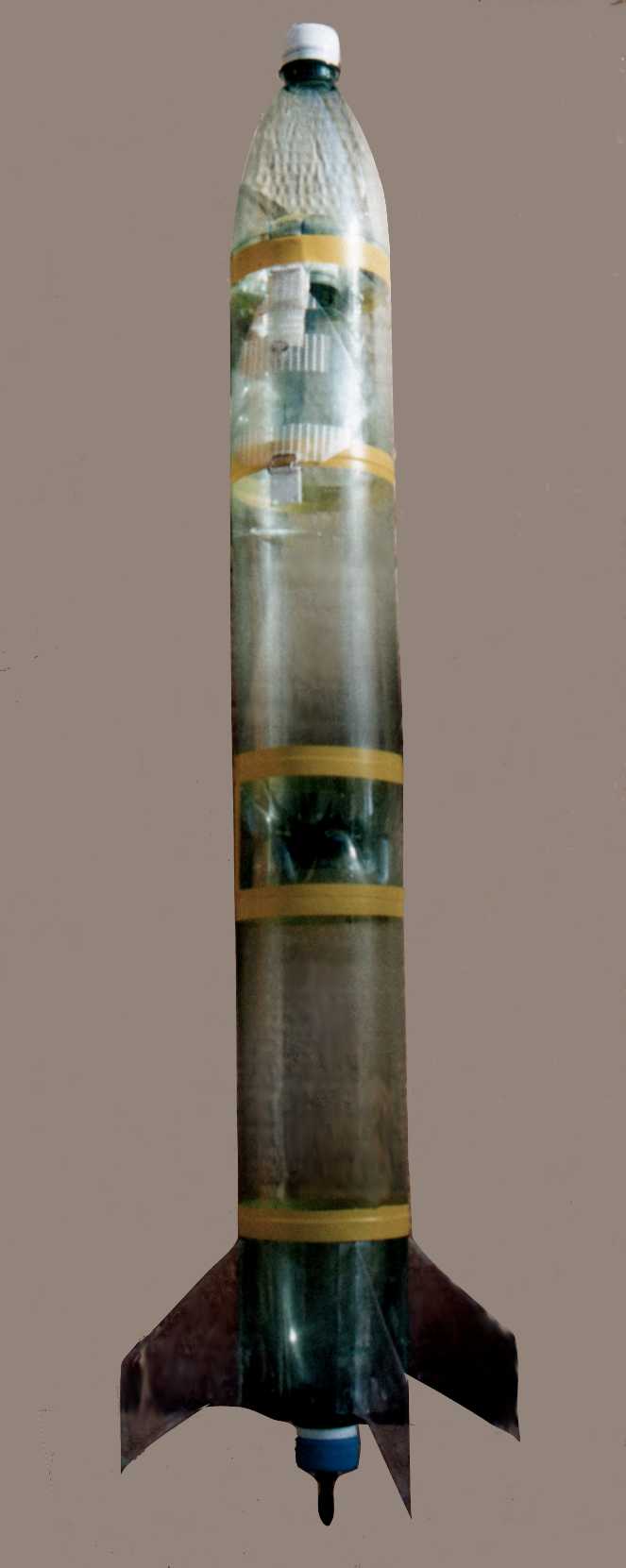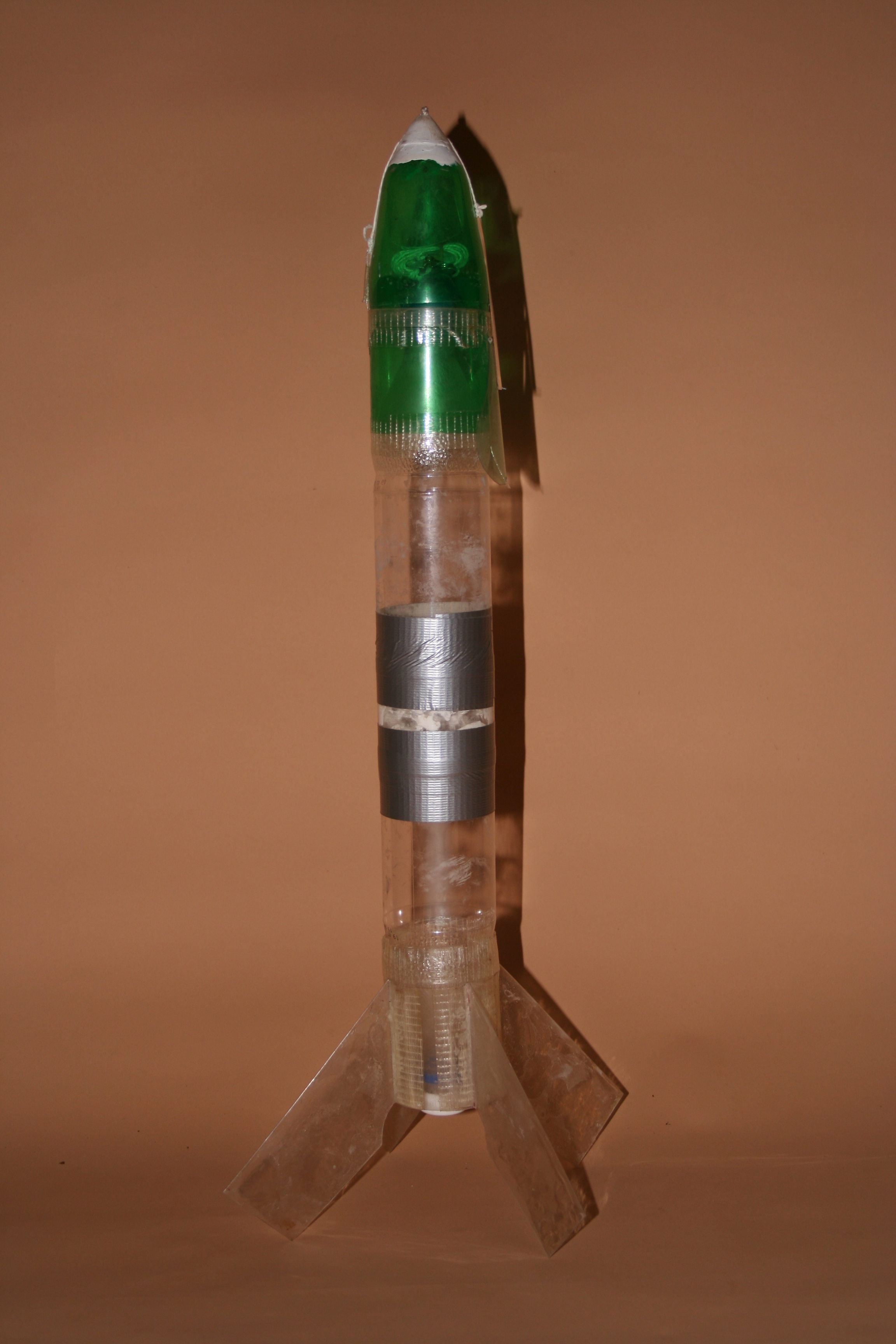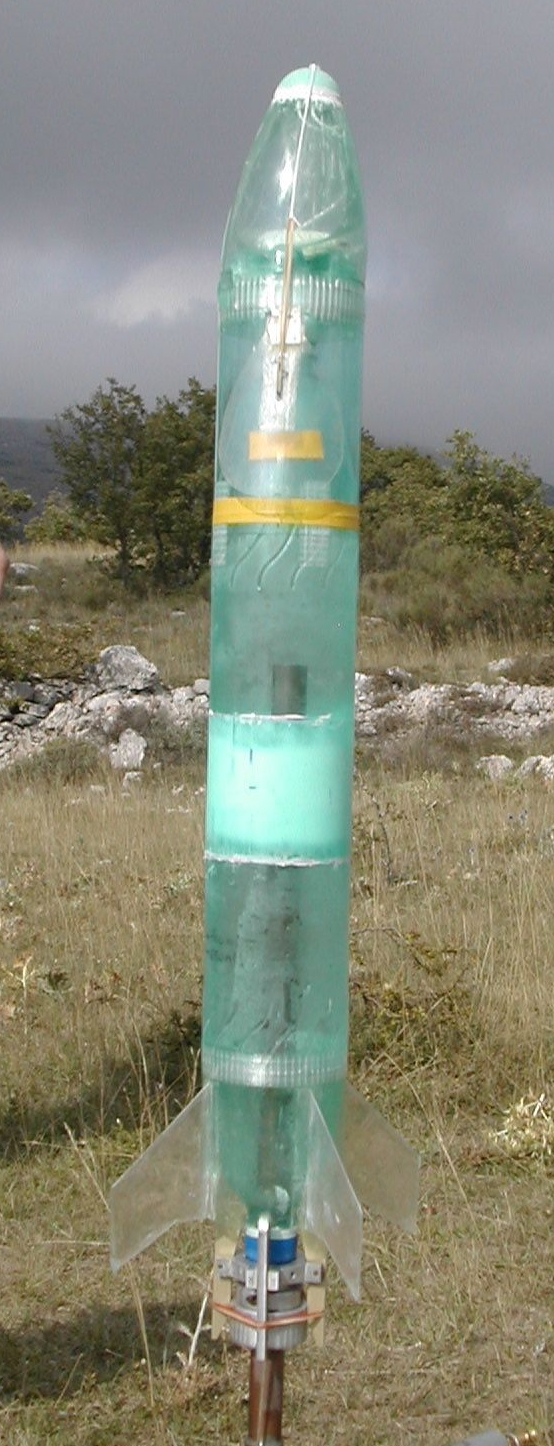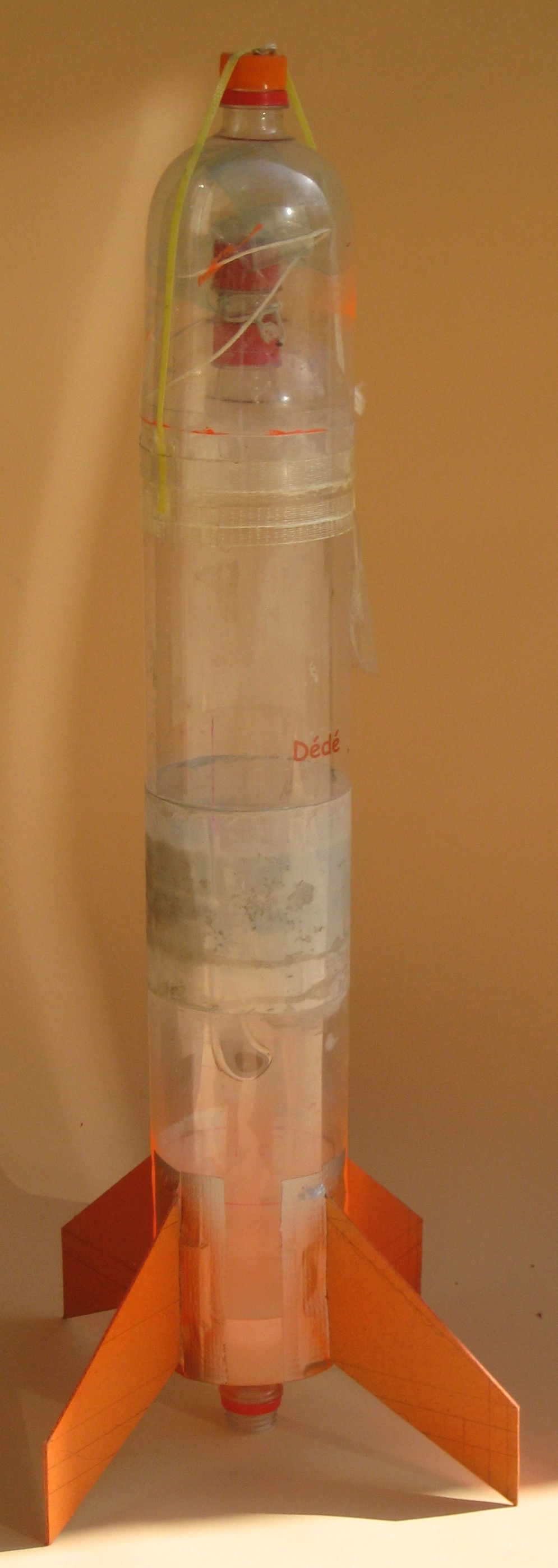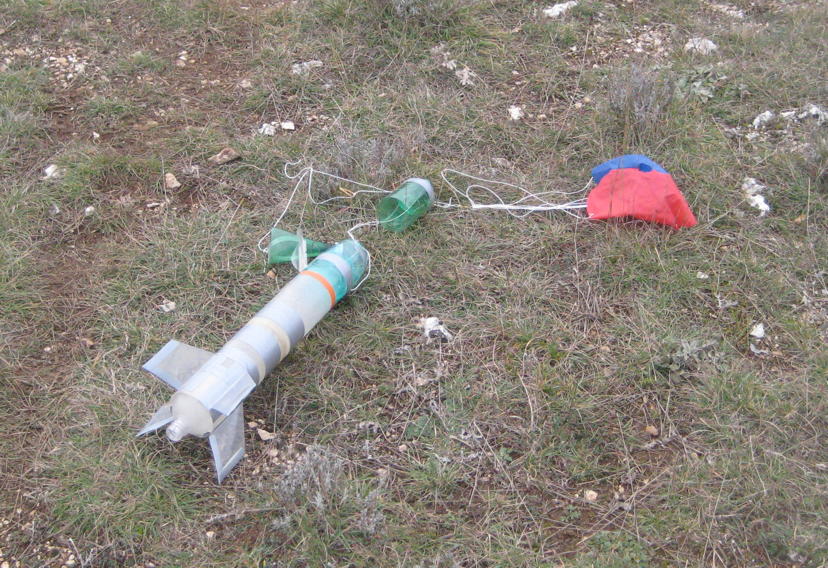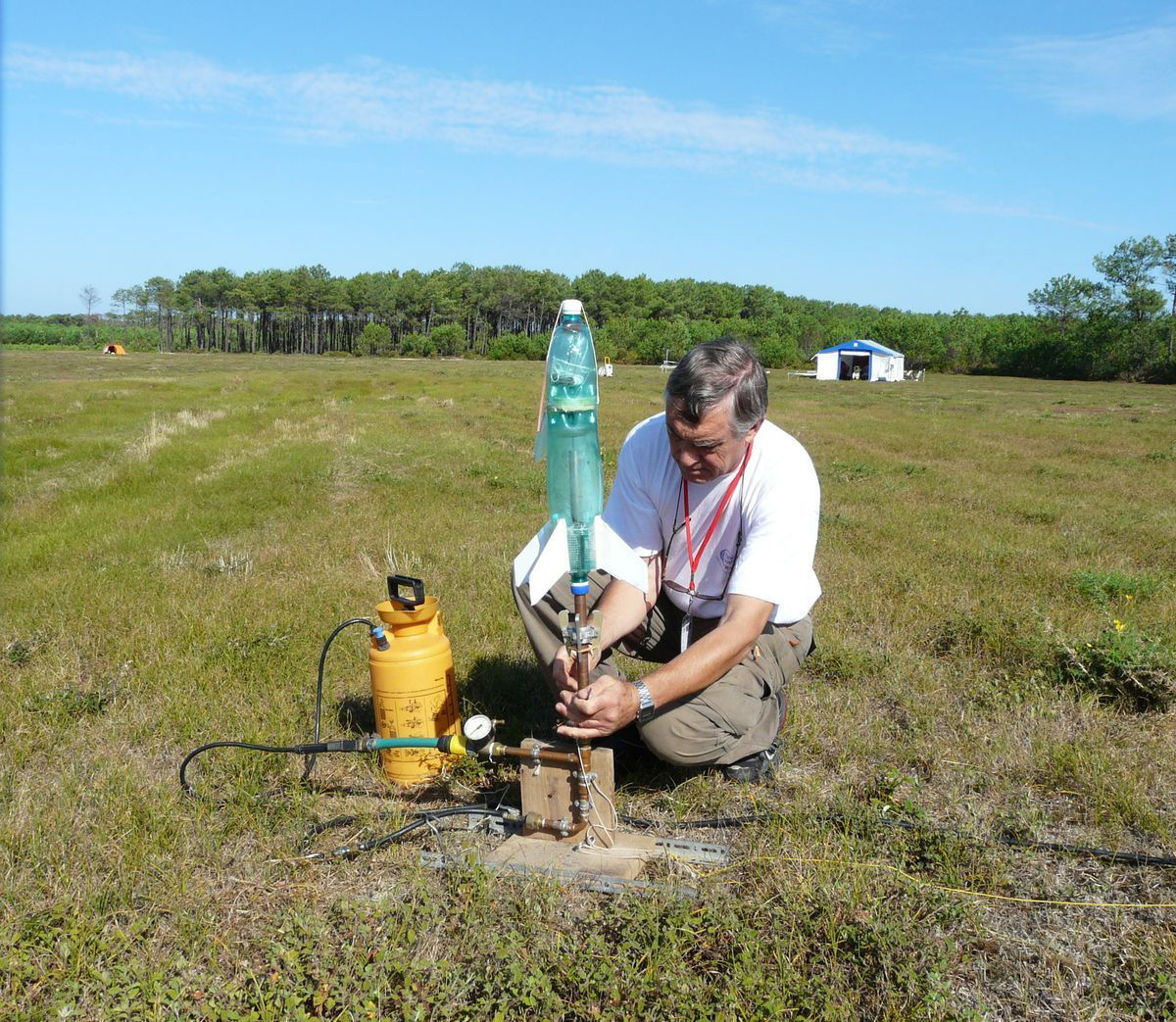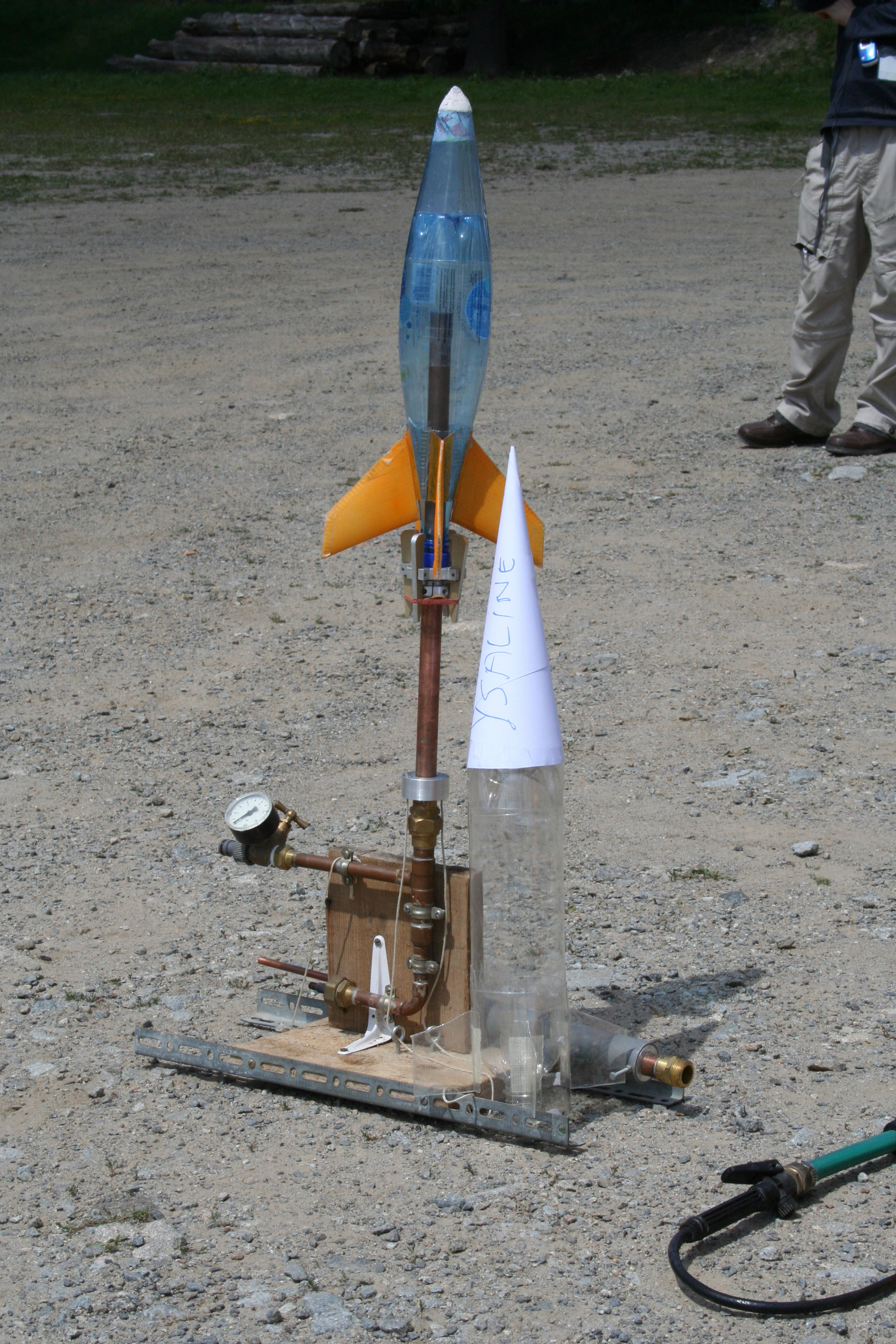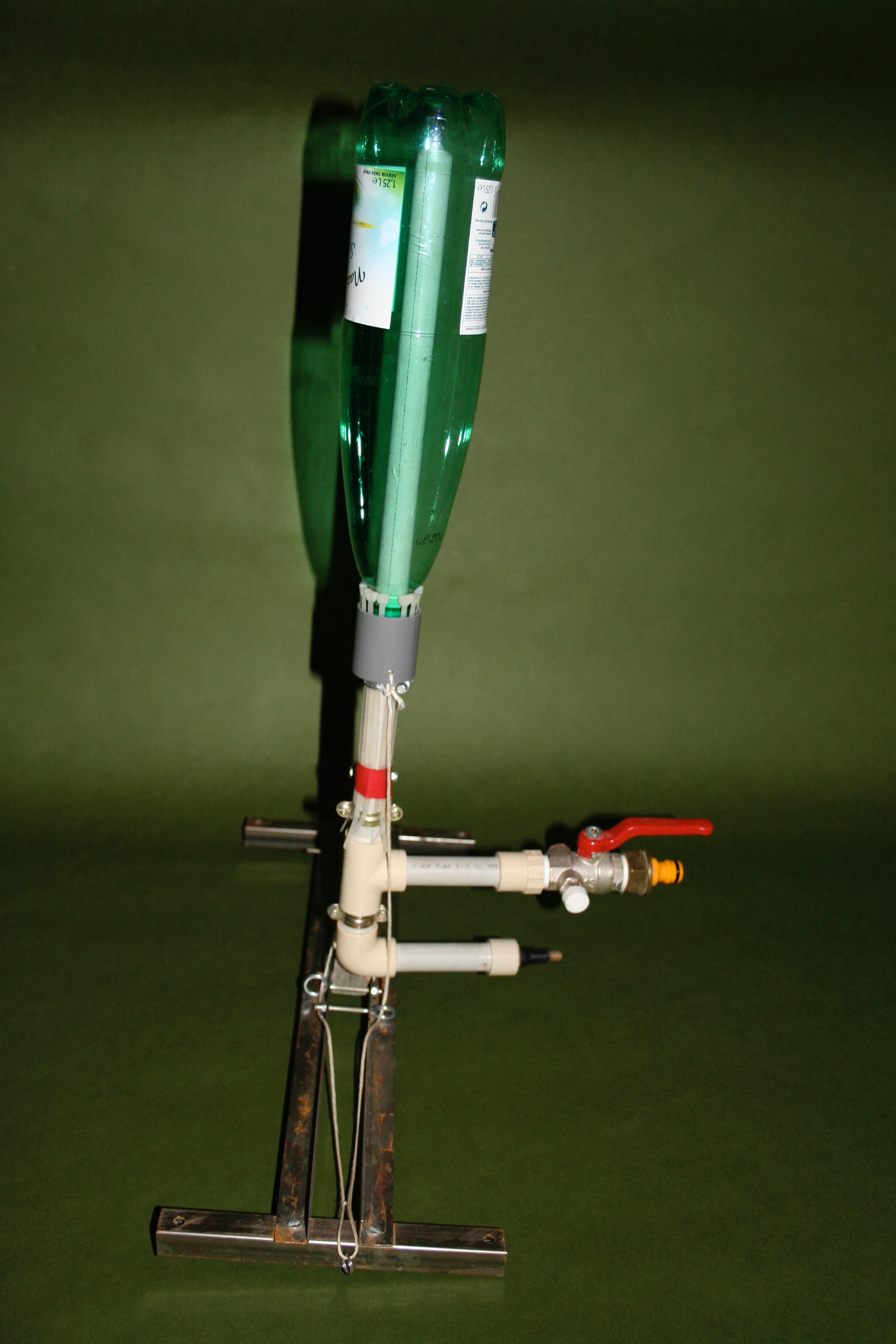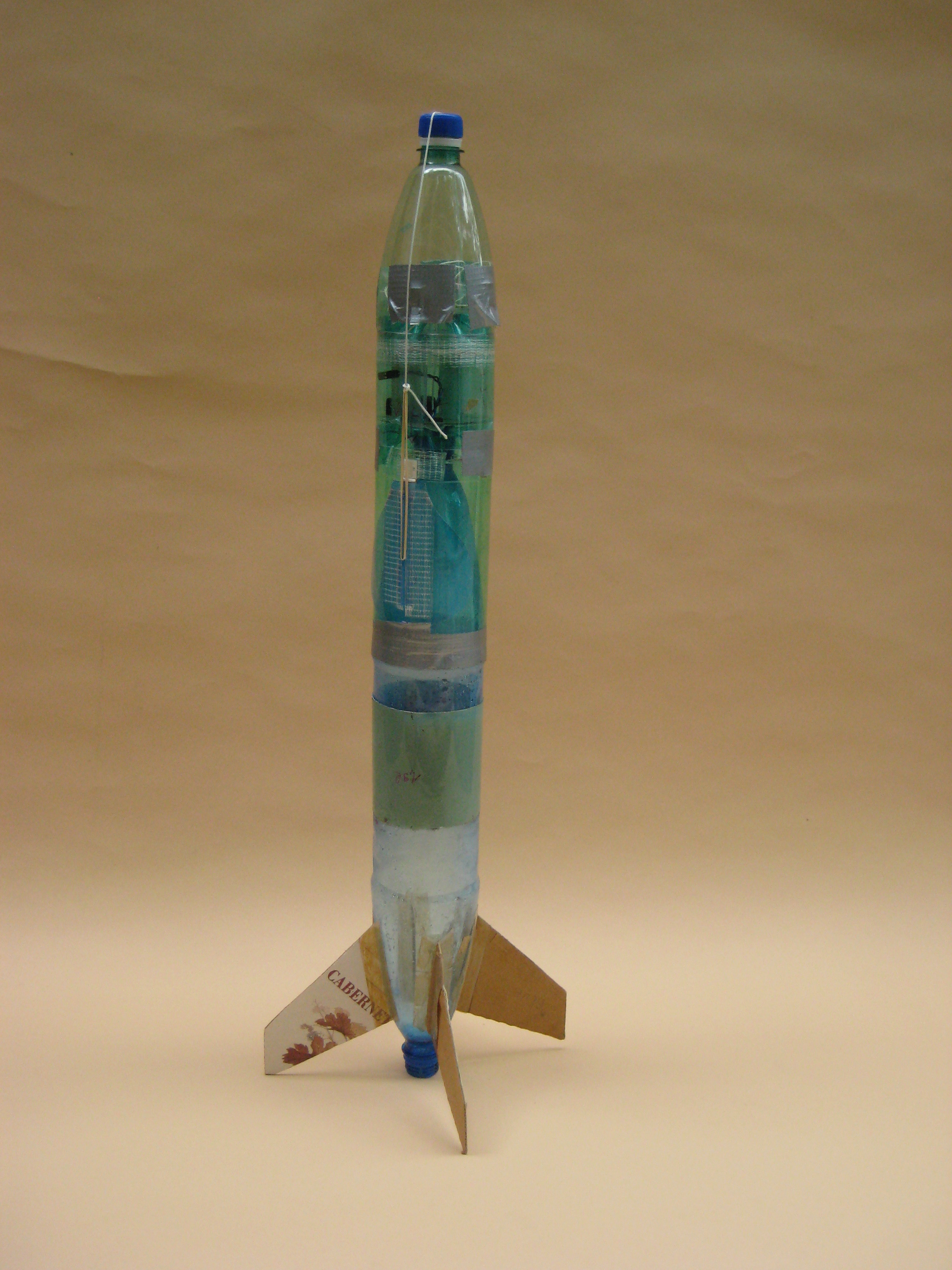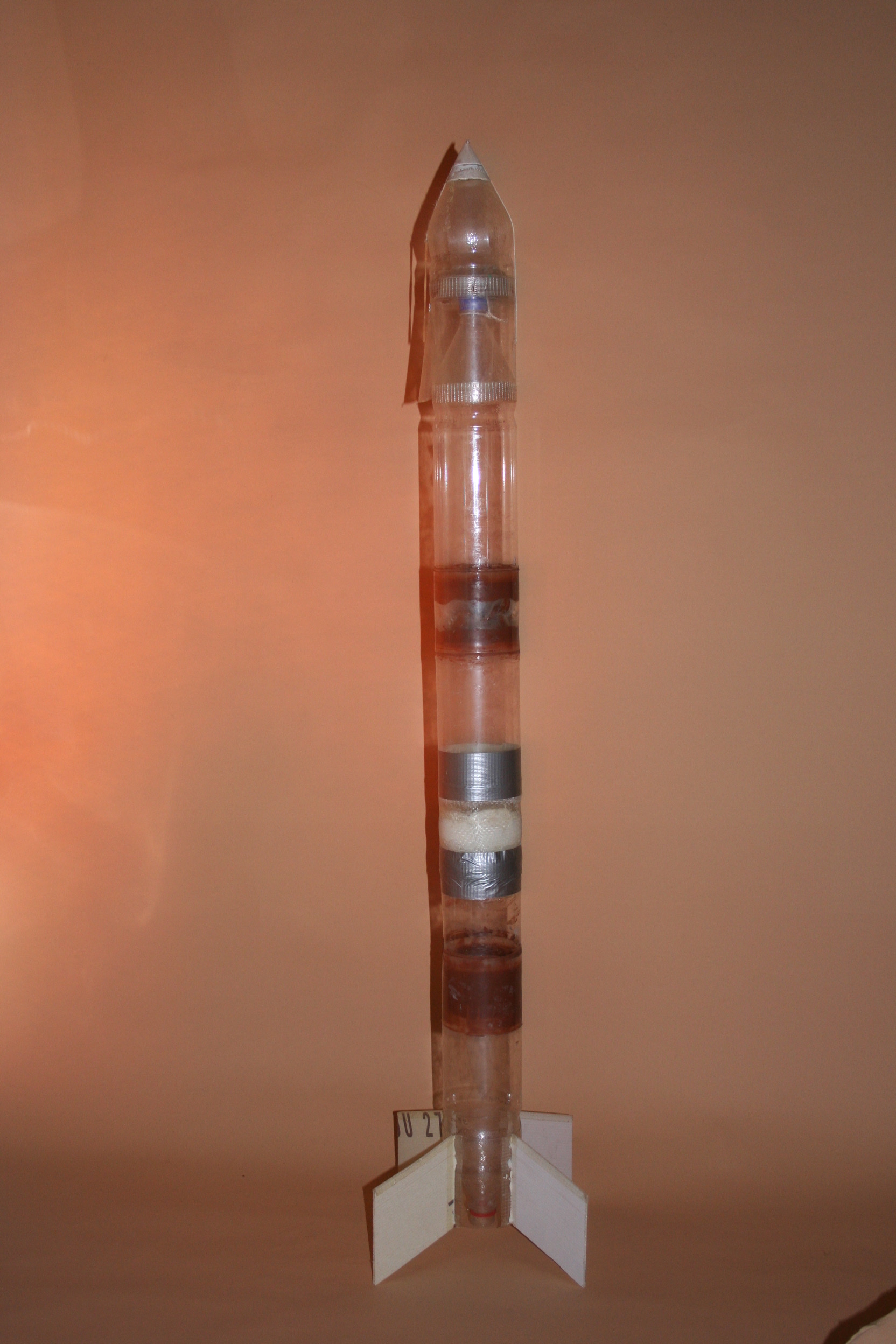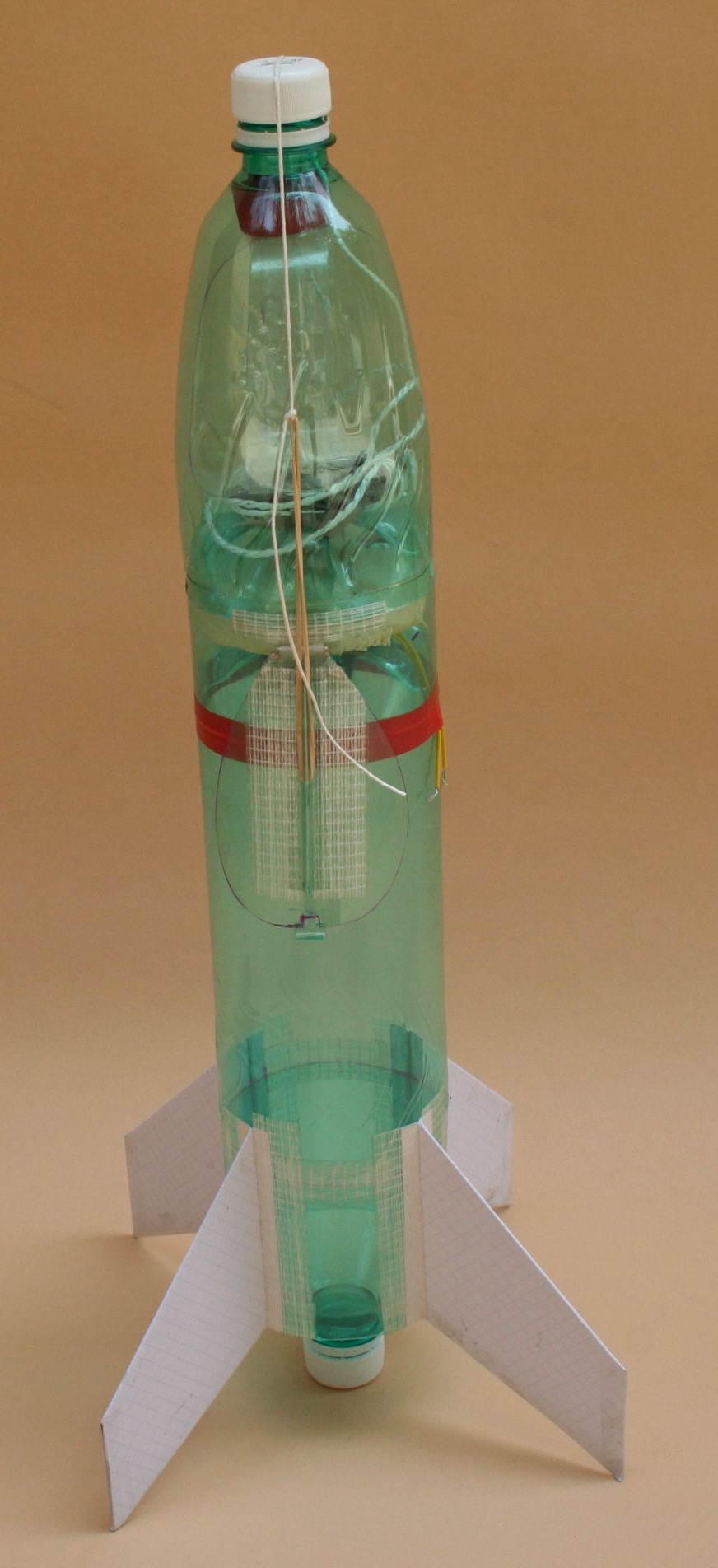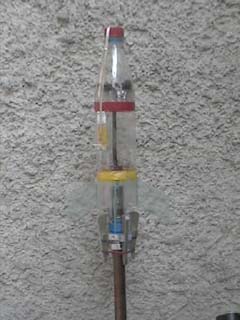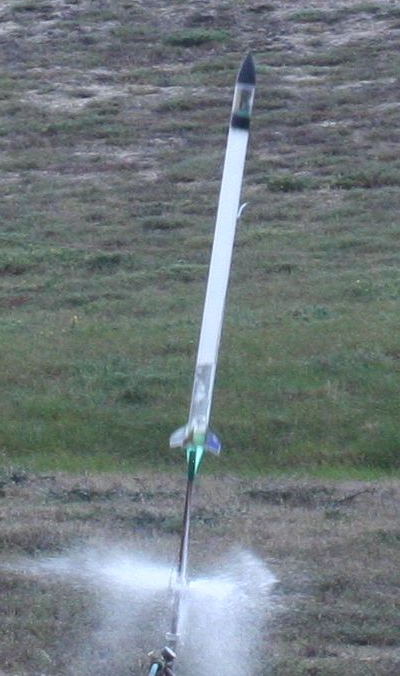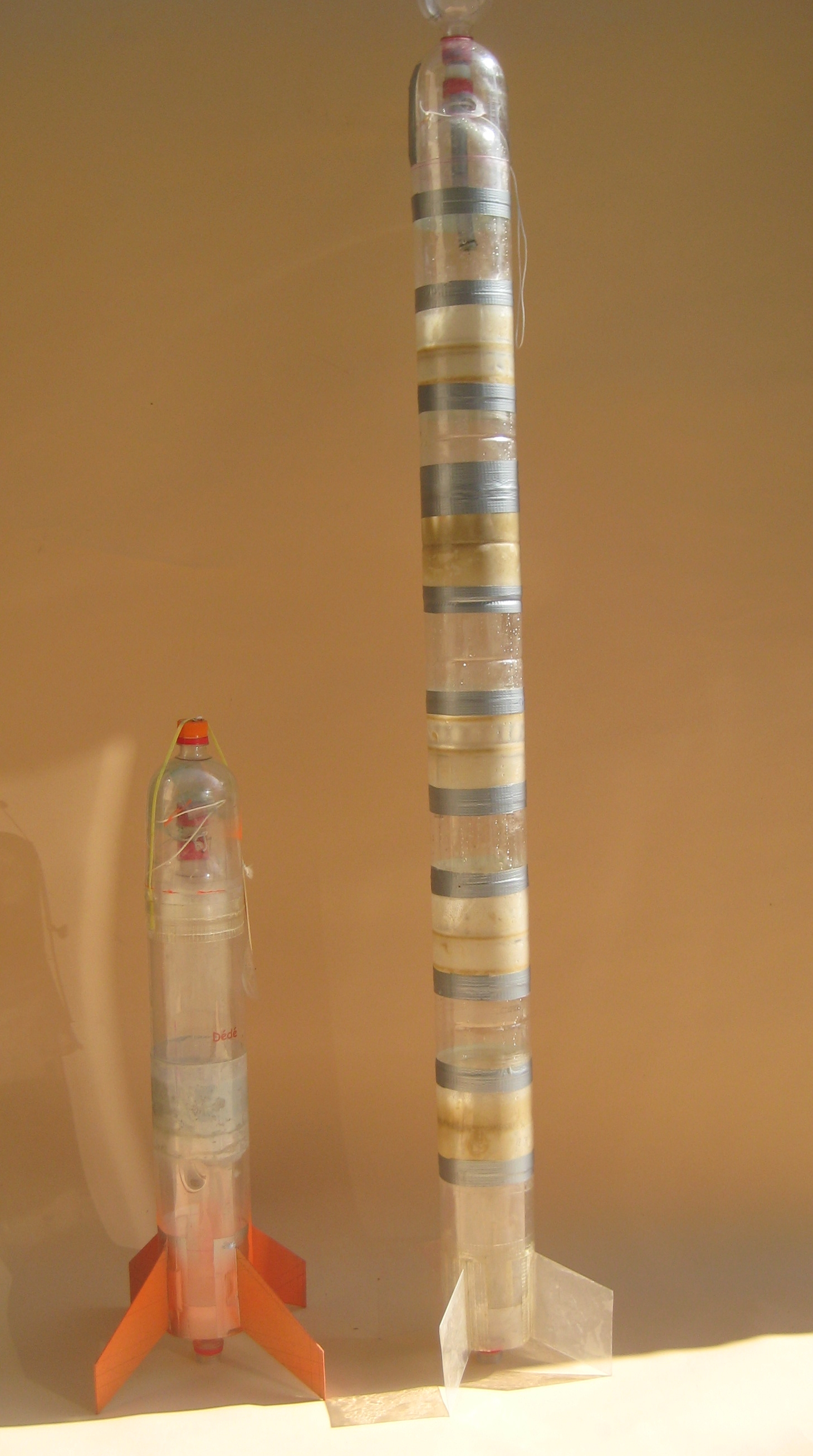Realizations
I will not describe all the rockets I have built, but only the most significant.
|
The very first, called alpha01 consisting of a simple bottle topped with a cone, made from the top of another bottle, and 4 rigid cardboard fins. With each flight I had to change the cone or at least the stripped one. |
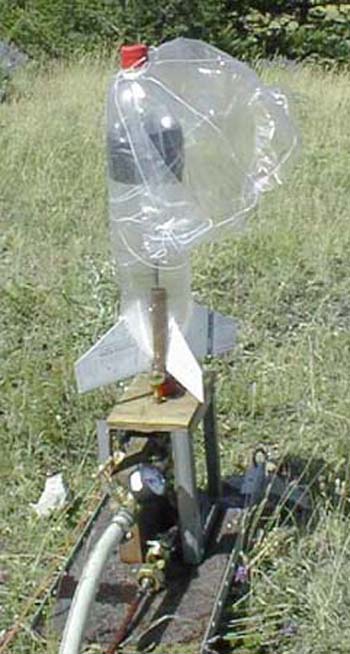
|
Then, I made Espoir01 which also included an aerodynamic shutter recovery system. She climbs a little lower, but she no longer suffers from the return to earth :-) |

|
I then tackled the multi-bottle tanks, first by drilling holes of approximately 20mm in the bottoms of the bottles and assembling them by gluing by sliding a tube of 20 mm in external diameter into the hole. Bonding with araldite first, then with sykaflex 11FC. I was having trouble avoiding leaks, so I switched to the method described by Bruce Berggreen (whose site has unfortunately disappeared). I describe this method on the page "tank".
|
|
|
|
|
|
Ass to ass collage with a hole drilled in the bottom of each bottle in which is put a tube and the whole glued to araldite or sykaflex 11FC |
Double 0.5l, which served as the second stage |
Double 1,25l |
Double 2l, which can serve as a first stage. |
I built several tanks on which I placed different kinds of fins and different kinds of cones.

|

|
|
 |
I then switched to multi-stage rockets. The first stage being consisting of a double 1.5l bottle and the second, i.e. a single 0.5l or a double 0.5l.
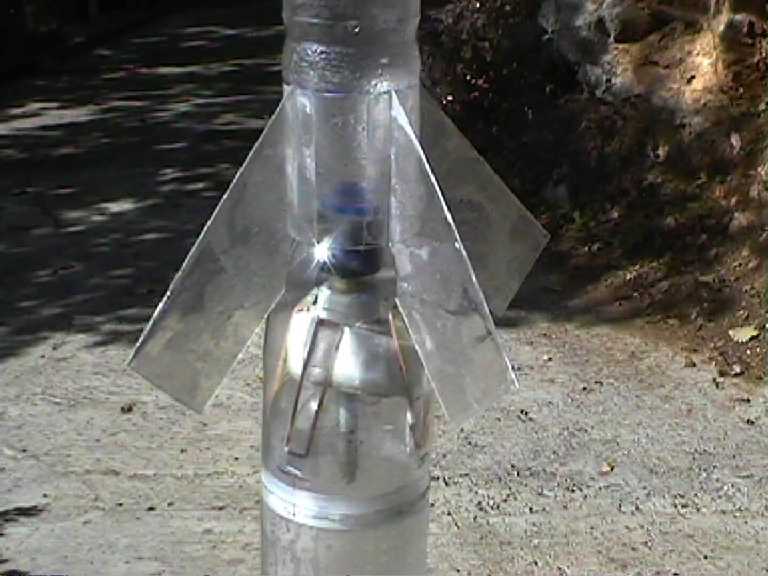 |
 |
|
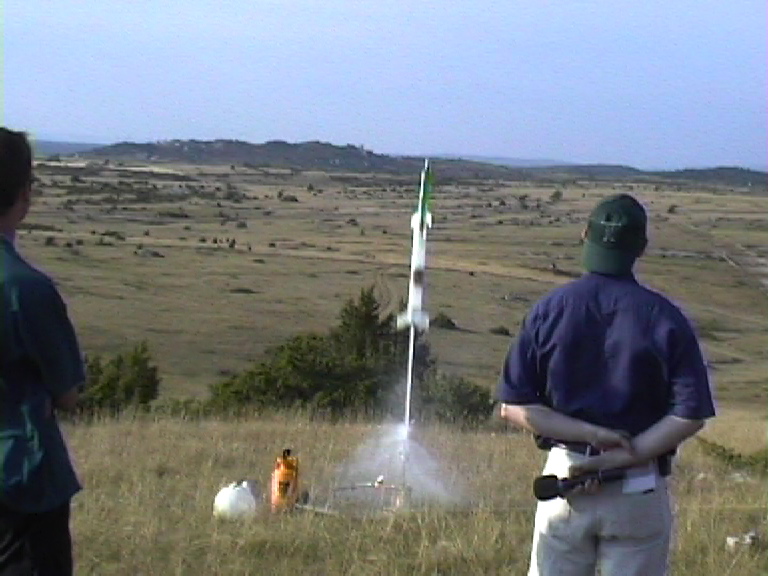 |
I also tried some funny recovery systems, first a recovery with deployable wings (the 3 pictures on the left, then helicopter style on the right
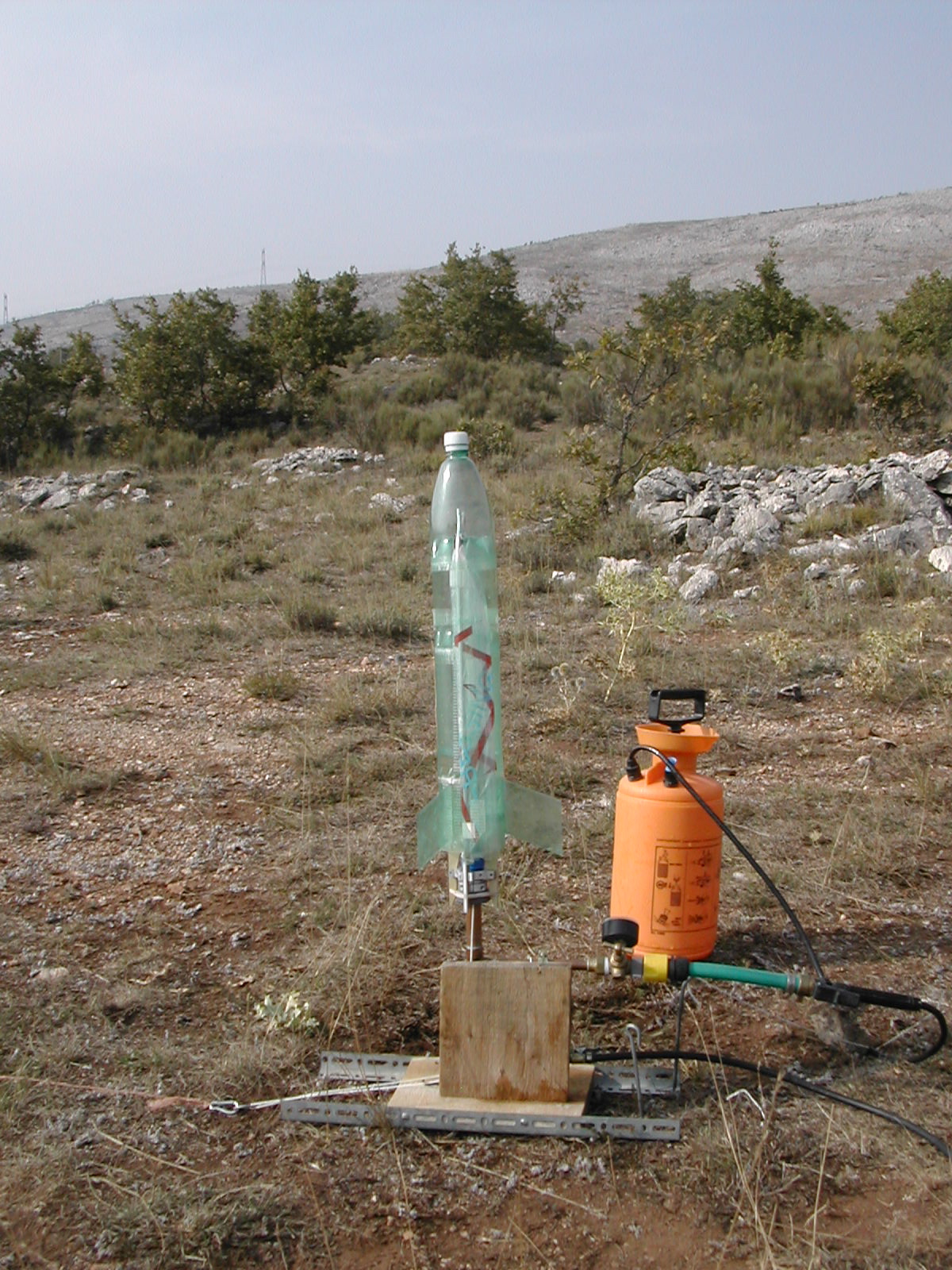
|
 |
|

|
Even crazier, I made a Cansat launcher. It was a double 1.5l surmounted by the housing for the cansat which was dropped at apogee.
The rocket was recovered on its side and the cansat on the other
| |
 |
|
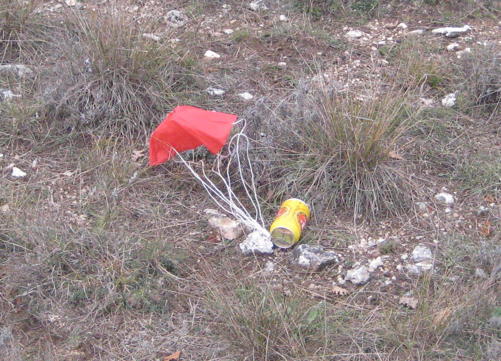
|
Rockets based not on soft drink bottles but on FTC (polycarbonate) tubes
First without structural reinforcement, so the tubes alone, then sheathed by a carbon / epoxy sheath to be able to build up pressure. For this kind of very fine rocket, (diameter 42mm), difficult to make a recovery system by aerodynamic shutter, hence the need to switch to electronics
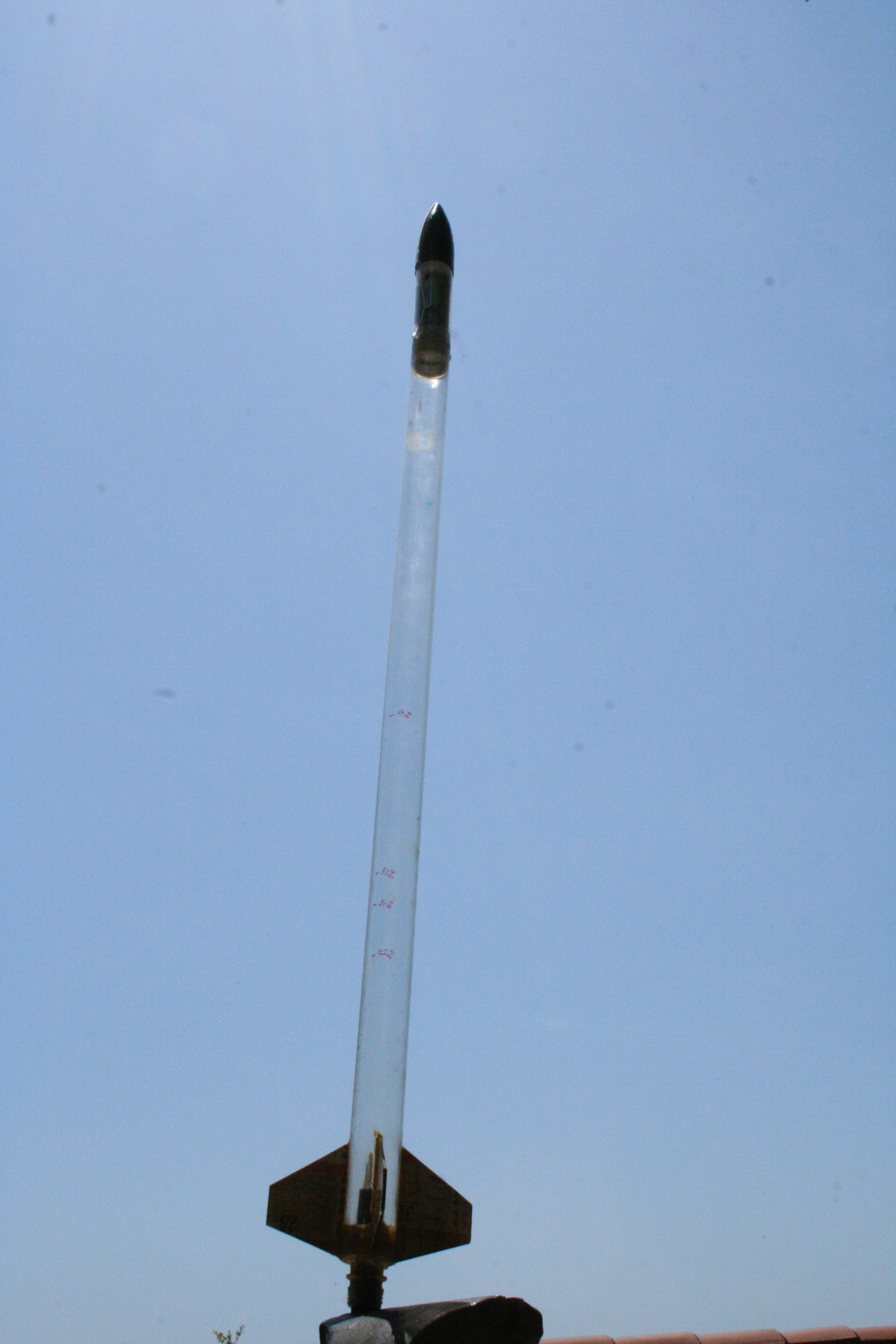
|
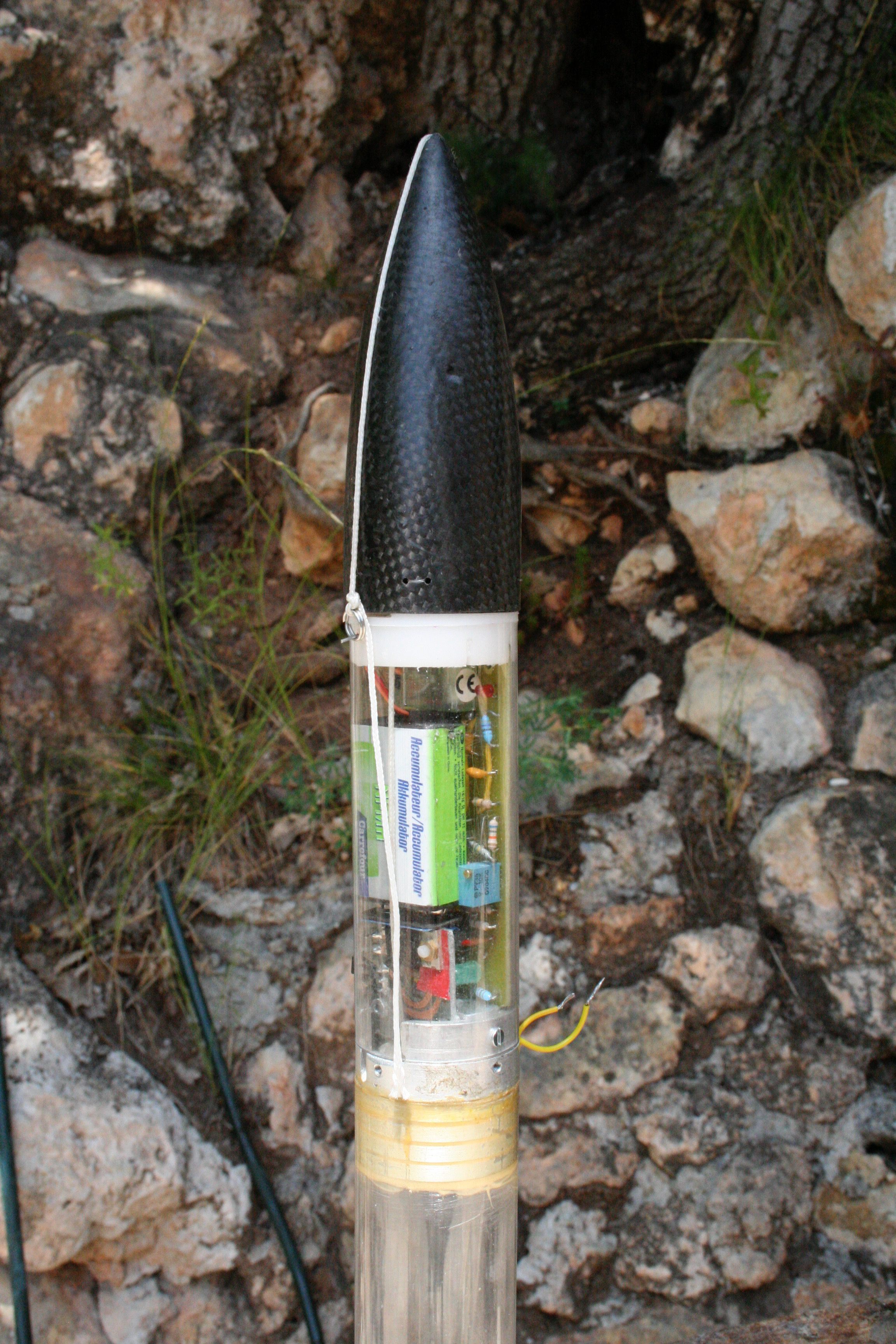 |
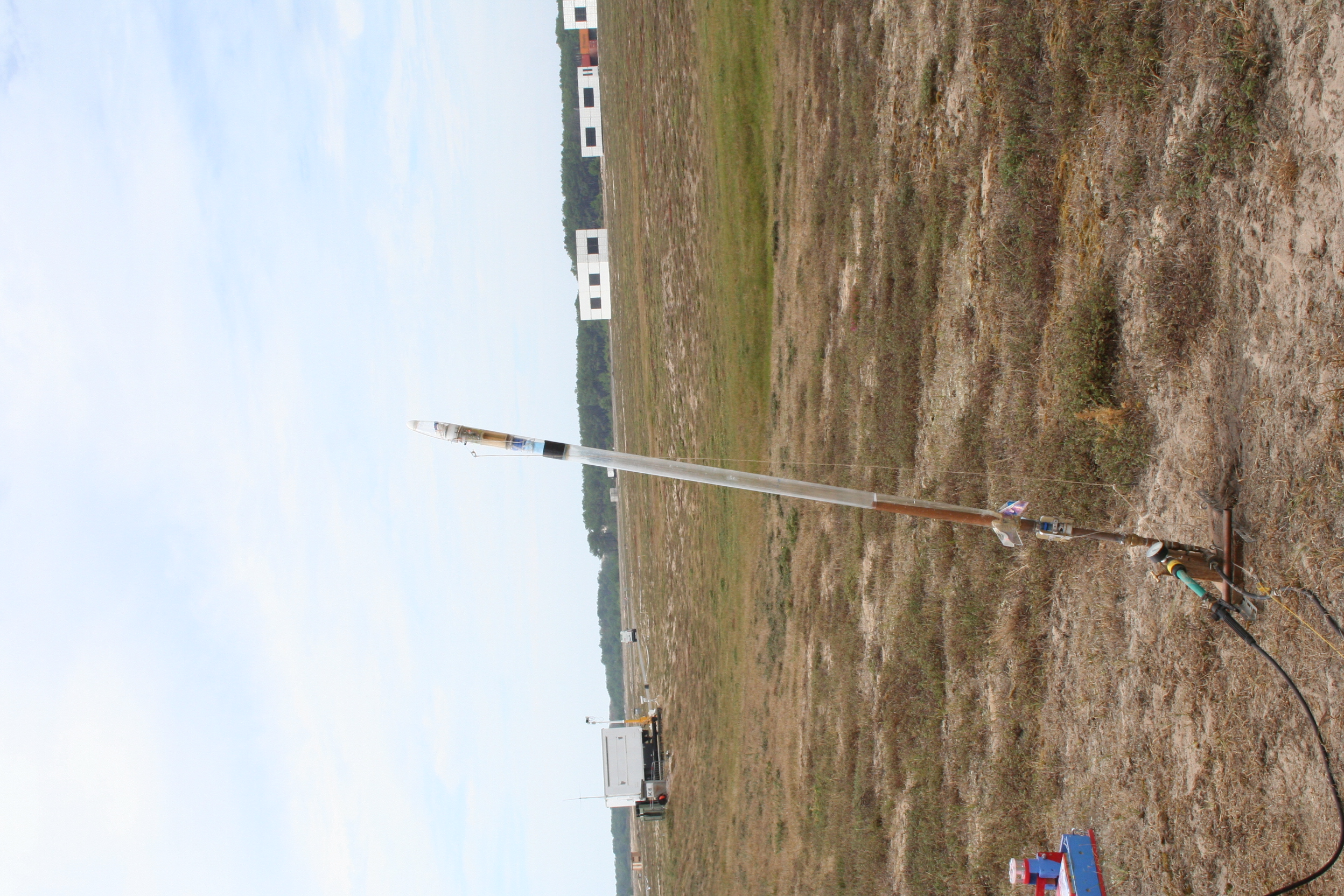 |
 |
Along with these rocket evolutions, the launch base has also evolved.
|
|
|
|
|
|
Very first launcher with lug retention system rotary |
Improvement of the previous claw retaining system |
Another improvement: the vertical part of the tube is removable which allows on the one hand easier storage but also change the restraint system. Here claw system but we can use a cable tie system or a garden hose. |
The same kind of ramp but based on CPVC tube, there is no welding, than gluing. |
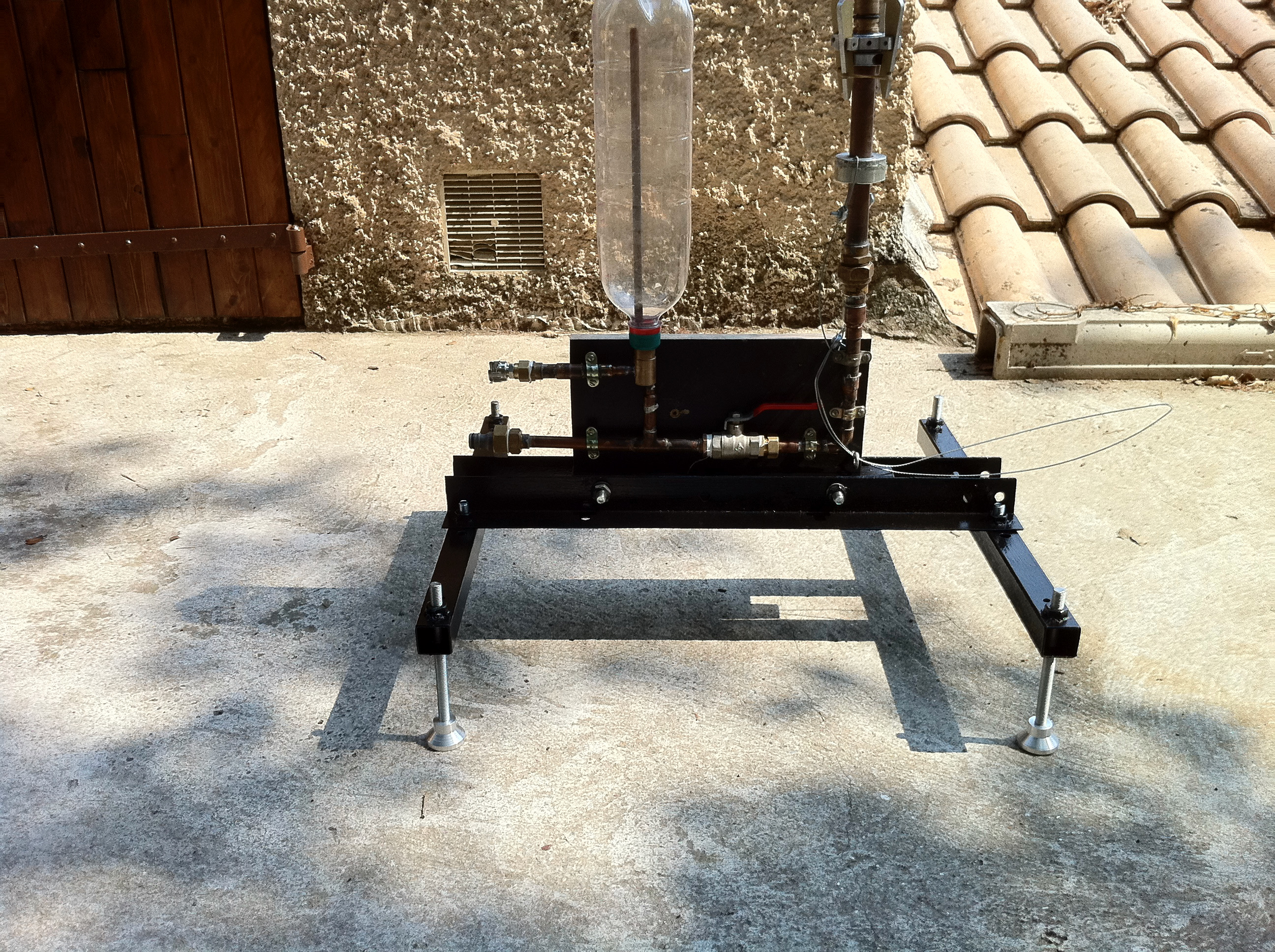 |
 |
|
|
|
More stable frame, and precise water dosing system, but inflation through the metering bottle. |
Modification of the ramp opposite by adding a three-valve ways to send the pressure either into the metering bottle, either in the rocket. |
High pressure ramp under construction. Here in test at pressures compatible with a bicycle pump, i.e. less than 10 bars |
The same finished with the connection for the high pressures. |
Other achievements, in bulk
|
|
|
|
|
|
Twice 1.25l, cardboard fins |
Four times 1.5l akylux fins |
Twice 1.25l, cylindrical fins and nozzle type connector garden hose |
1,25l, cardboard fins and with a flash inside to better identify it. To launch at nightfall |
|
|
|
|
|
|
0,5l, PET fins |
0,33 l akylux fins |
FTC T17 tube-based rocket (63mm diameter) Recovery by electronic timer, fins cut from old CDs. Carbon cone |
6 x 2l, PET fins next to a 2 x 2l, PET coated balsa fins |
